The Independent's journalism is supported by our readers. When you purchase through links on our site, we may earn commission.
Lisbon city guide: How to spend a weekend in the Portuguese capital
Here's how to make the most of a short break to Lisbon
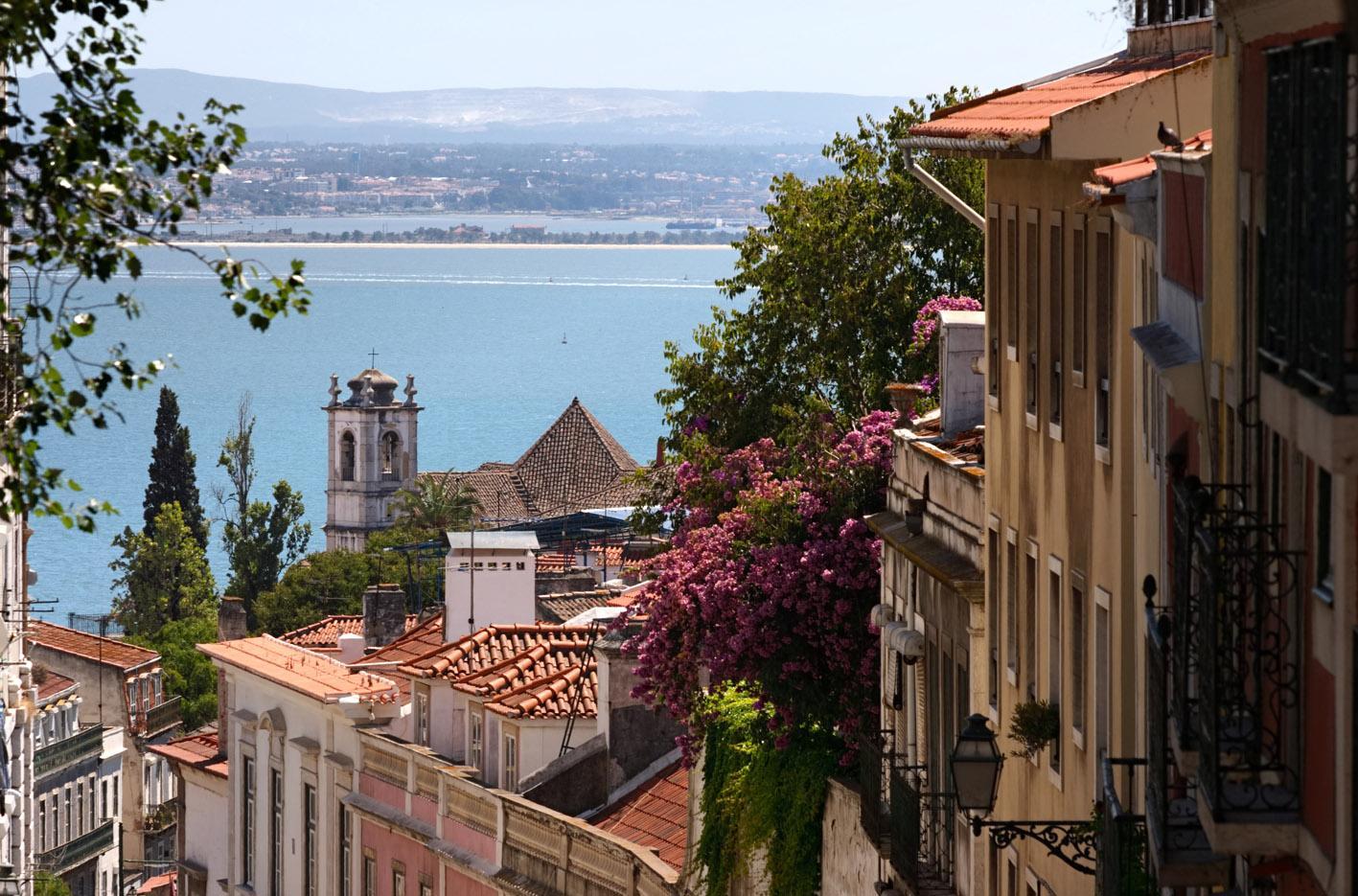
Your support helps us to tell the story
From reproductive rights to climate change to Big Tech, The Independent is on the ground when the story is developing. Whether it's investigating the financials of Elon Musk's pro-Trump PAC or producing our latest documentary, 'The A Word', which shines a light on the American women fighting for reproductive rights, we know how important it is to parse out the facts from the messaging.
At such a critical moment in US history, we need reporters on the ground. Your donation allows us to keep sending journalists to speak to both sides of the story.
The Independent is trusted by Americans across the entire political spectrum. And unlike many other quality news outlets, we choose not to lock Americans out of our reporting and analysis with paywalls. We believe quality journalism should be available to everyone, paid for by those who can afford it.
Your support makes all the difference.Why go now?
This is a dynamic time for Lisbon, with a seemingly unstoppable wave of new hotels, restaurants, and museums opening between the rambling old quarters and the waterfront that runs along the river Tagus to the Atlantic. During the summer months, it comes into its own with life lived outside and special events to celebrate the warmer weather. Fittingly for a city that’s reinventing itself as well as celebrating its past, Lisbon was the Ibero-American Capital of Culture 2017 (lisboacapitaliberoamericana.pt) with “Past and Present” the main theme. Meanwhile, the striking new Museum of Art, Architecture and Technology (MAAT) (1) officially opened last year on the neglected waterfront area in Belem. Despite the hills, Lisbon’s an easy city to explore on foot, and summer is the best time to do so.
Get your bearings
Easy to explore in a day or two, Lisbon’s historic centre is fairly compact for a European capital. After an earthquake in 1755 destroyed much of the medieval centre, a new grid-like pattern was created – a navigational gift to the modern traveller.
Baixa, or lower town, sits in the centre with the broad Praça do Rossio square (officially named Praça Dom Pedro IV) (2) at its heart, fed by the vast artery of the palm-lined Avenida da Liberdade to the north and the pedestrianised Rua Augusto heading south to more grand waterfront-facing squares. So far, so easy to navigate – because this part’sa all flat. To go anywhere else, however, you’ll have to tackle Lisbon’s infamous seven hills. The stone pavements are walkable but uneven and slippery – take shoes with grip to help you climb.
The main tourist office – Ask Me Lisboa Centre (3) – is on the Rua do Arsenal (00351 21 031 2810; golisbon.com), and is open from Monday to Friday, 9am-8pm. Smaller Ask Me Lisboa kiosks are dotted around the city.
Day one
Take a hike
The beauty of Lisbon is that places that look far away are in reality quite near – give or take a steep hill or two. From Praça do Rossio head east, passing the Baroque fountains either side of the towering statue of Dom Pedro IV, once king of Portugal and first emperor of Brazil. Continue straight onto the café-lined pavements of Praça da Figueira (4), a transport hub for the Baixa district, turn right onto Rue da Madalena, a colourful, commercial street lined with bookshops and hardware stores, then left onto Largo Chão do Loureiro (5). From the old market building, now a Pingo Doce supermarket, take the 118 steps up from the elevator by the entrance (or take the lift). At the top, follow the throngs along Costa do Castelo to the entrance of Lisbon’s only castle.
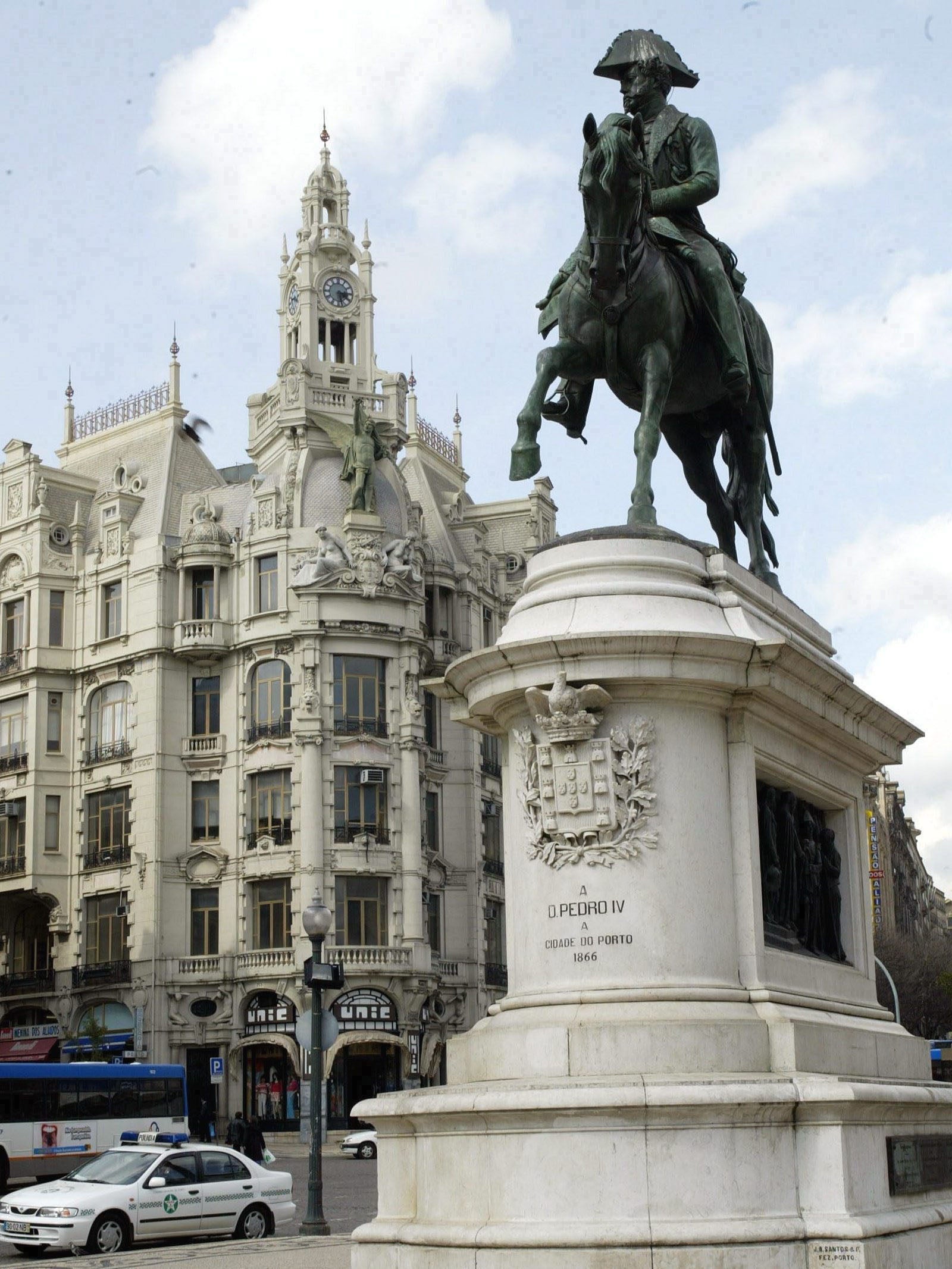
Take a view
The advantage of being built over seven hills is that there’s no lack of cinematic viewpoints. It’s hard to beat the panorama of red-tiled rooftops descending to the wide sweep of the River Tagus from the Castelo de São Jorge (6) (00351 218 800 620; castelodesaojorge.pt). Perched on the highest hill in Alfama, the city’s oldest district, the castle’s open to visitors so you can look out from the ramparts once ruled by Visigoths, Moors and Christians. It’s open 9am-9pm daily until October, then until 6pm until March. Entry €8.50.
Lunch on the run
A 10-minute meander northeast from Alfama, Santa Clara is a peaceful area of elegant stone houses and squares. Discreetly set in one of them, on the Campo de Santa Clara, steps from the National Pantheon and the Sao Vicente de Fora church and monastery, Santa Clara 1728 (7) (00 351 934 418 316; santaclara1728.com) is a tiny design hotel which has just opened its fantastic restaurant to guests. Eat at a communal table in the light-filled dining room, and enjoy fresh, seasonal fare such as vegetarian lasagne with sweet potato puree, spinach and chives (it aims to elevate vegetables to sublime heights).
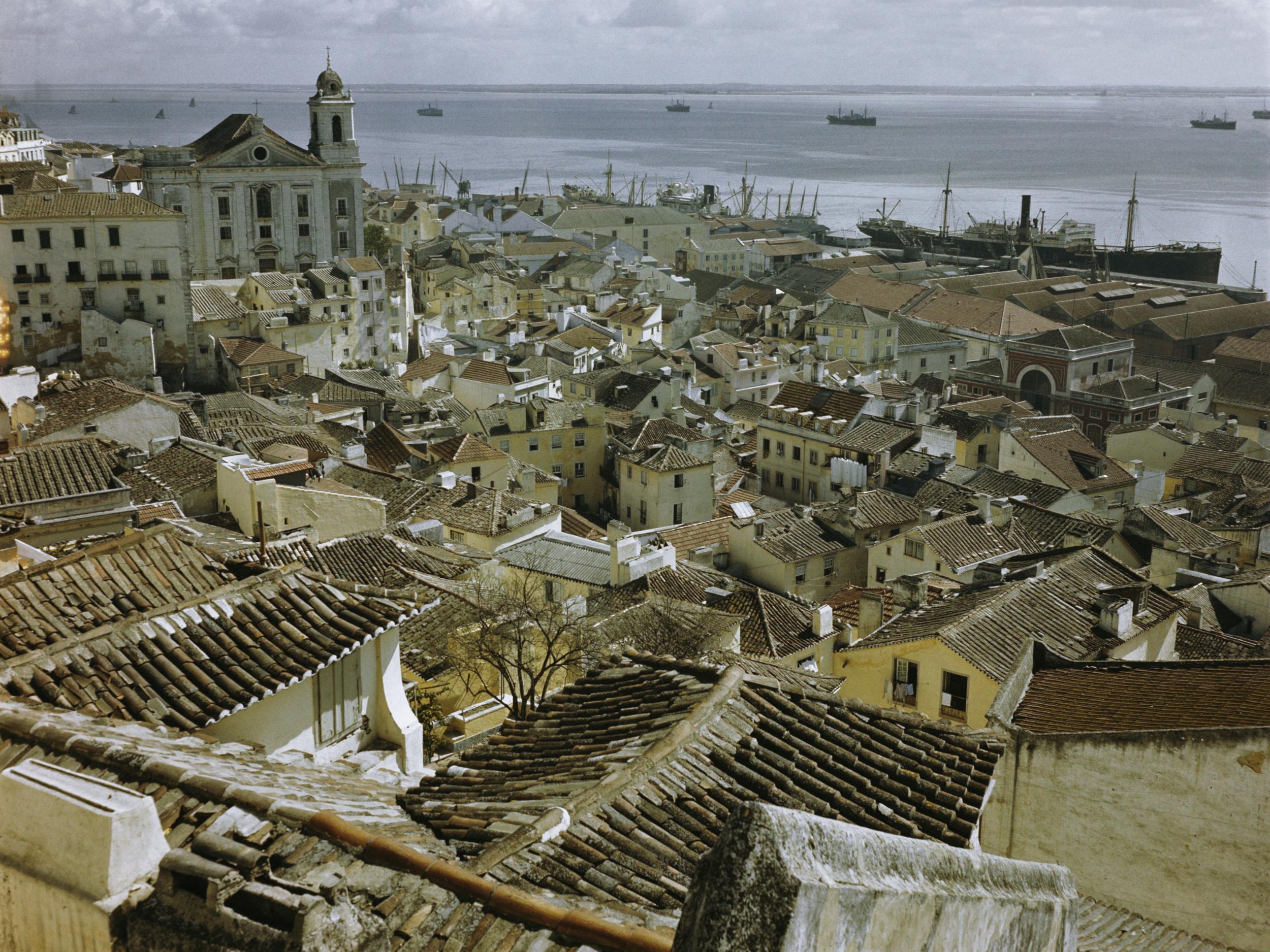
Window shopping
The Feira de Ladra (flea market) fills the Campo de Santa Clara (8) twice a week on Saturdays and Tuesdays. Stalls range from bric-a-brac and antiques to South American-style hippy gear and CDs. Highlights necessitating a bigger suitcase – or a move to Lisbon – include a row of 1930s cinema seats and sets of art deco lights. It’s open 8am-6pm.
An aperitif
Thirsty? Retrace your steps past the Sao Vicente de Fora church and monastery, left onto Rua São Tomé and down towards the Miradouro de Santa Luzia in Alfama, a bougainvillea-clad terrace with sea views. Opposite, the rustic Farol de Santa Luzia (00351 21 886 3884; no web) (8a) is a cosy spot selling palatable Portuguese wine by the glass. Open daily from 5.30pm-11pm, except Sunday.
Dine with the locals
Head down the Rua Augosto Rosa, continuing on to Largo Santo António da Sé, then Rua da Conceição turning right onto Rua Nova do Almada and left onto Rua Garrett. A final right turn and you’ve reached Rua Nova da Trindade. Here lies much of the empire of José Avillez, the celebrated El Bulli-trained Portuguese chef. The appropriately named Bairro do Avillez (9) includes a small gourmet shop, deli counter and courtyard seafood restaurant. The lastest addition is Beco (00351 210 939 234; becocabaretgourmet.pt) which opened its curtained-off doors in a stone-walled 13th-century chapel to the rear in March. You need a password to enter the darkly lit space, but the 12-course set menu includes dishes such as “exploding olives” with a chocolate pit, and a tuna tartare pizza. Against the odds, it works. There’s entertainment, too – showgirls dressed in vintage-style outfits and fishnets perform on the tiny U-shaped stage. It’s open Sunday to Thursday, 8.30pm-1am; Friday and Saturday, 7.30pm-2am.
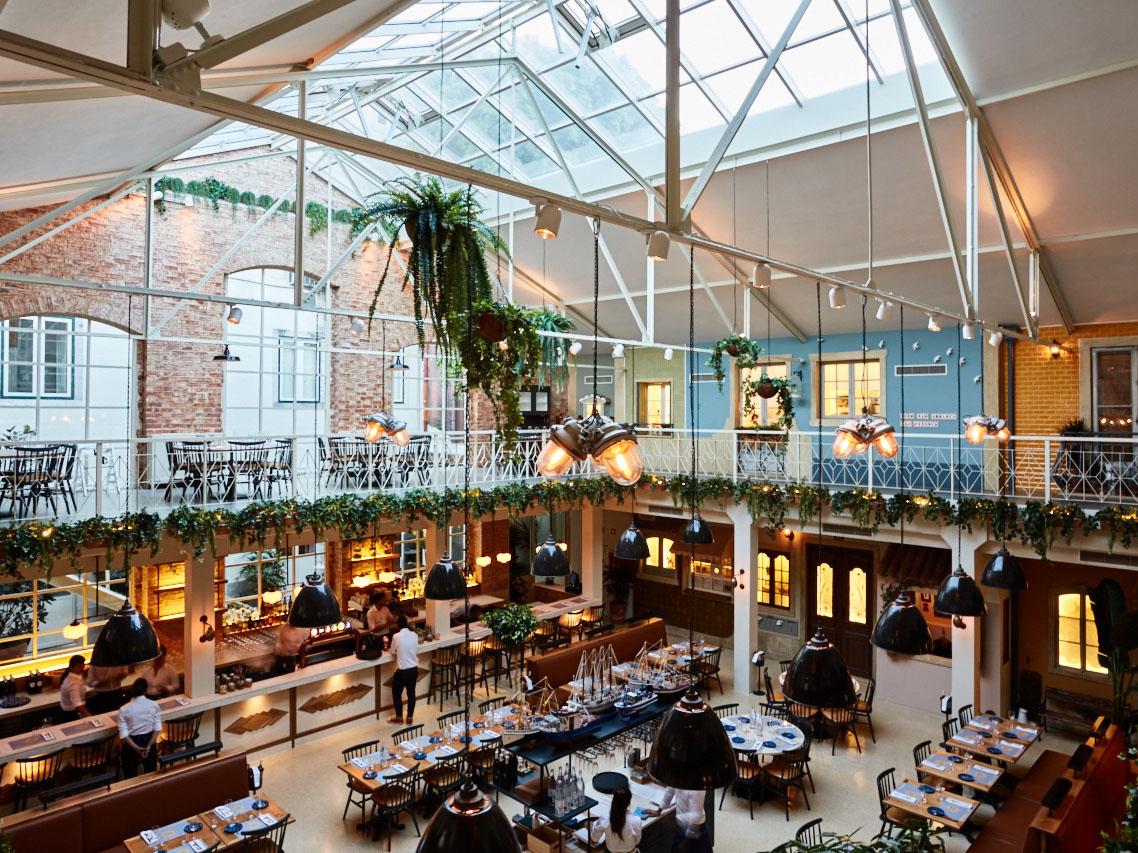
Day two
Sunday morning: out to brunch
It’s worth waiting for a late brunch at celebrity chef Henrique Sá Pessoa's new restaurant, Tapisco (10) (00351 213 420 681; no website). A good-looking place dishing up Spanish tapas and Portuguese petiscos (small plates) in the happening district of Principe Real, red leather banquettes line one side; a long marble bar where you can watch staff prepping in the open kitchen, the other. Dig into warm pan con tomate and jamon croquettes. It’s open daily from midday to midnight.
A walk in the park
Closed for some years, Principe Real’s 10-acre Botanical Gardens (11) are rumoured to re-open any day now. Until they do, stroll down to the Miradouro de São Pedro de Alcantara (12) on the road of the same name, as the district becomes Bairro Alto. This pretty public garden offers spectacular views across the entire city, particularly of the castle. A tiled map marks the city’s distinctive buildings and the lower garden contains busts of heroes and gods from Greco-Roman mythology. Across the street the Solar do Vinho do Porto (13) is an 18th century institution where you can sample over 300 different ports by the glass or bottle.
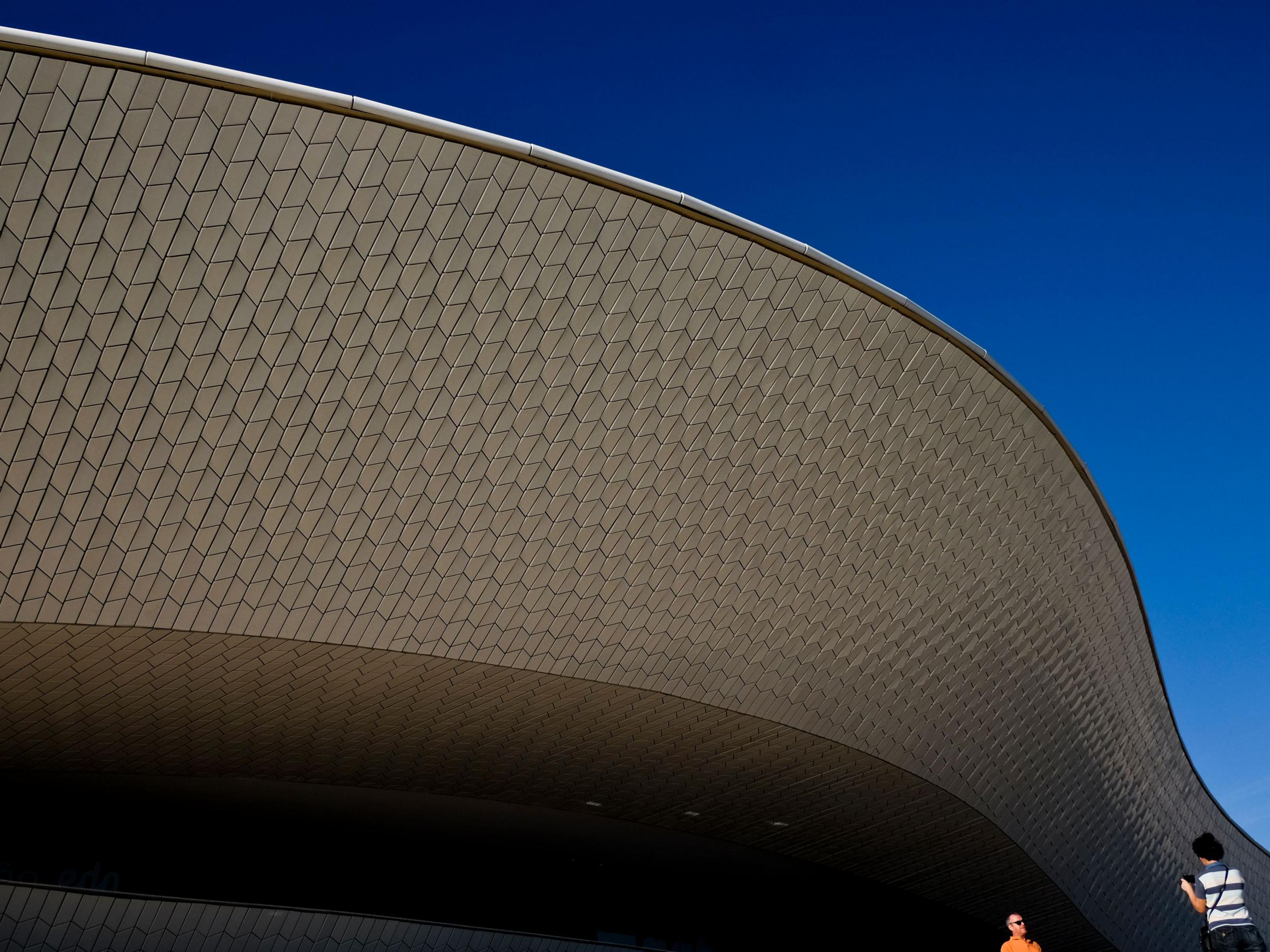
Cultural afternoon
From the Miradouro de São Pedro de Alcantara, walk down the long, cobbled Rua da Misericordia, past the San Roque church, and crossing Largo do Chiado along the full length of Rua do Alecrim. Turn right to join tourists and locals enjoying the waterside view, through the newly pedestrianised Cais do Sodre, a once seedy train station area that’s now been revamped. This is a long walk, so if you’re flagging, take a taxi outside the Cais do Sodre station (14). If not, keep going under the 25 de Abril Bridge until you see the low-rise curve of the MAAT (1) (maat.pt.)
Inside, the former MoMa curator has installed the inaugural exhibition Utopia/Dystopia: A Paradigm Shift, which runs until 21 August 2017. I’ve Never Been Surrealistic Until Today is a site-specific project by Cuban artist Carlos Garaicoa exploring the relationship between the city and the individual – it finishes 18 September 2017. Next door the handsome early 20th-century redbrick power plant (also part of the MAAT) proudly displays the giant internal pipes once used to power the city’s electricity from coal brought along the Tagus. It’s open 12-8pm daily except Tuesday. Entry costs €5.
Take a ride
By now you may be aching to use Lisbon’s historic public transport system. Walk across the footbridge to Rua da Junqueira (15) where the number 15 tram will shuttle you back to Baixa. Be warned that modern trams aren’t as romantic as you think, and are as rammed as the Tube. Single fares cost €2.90.
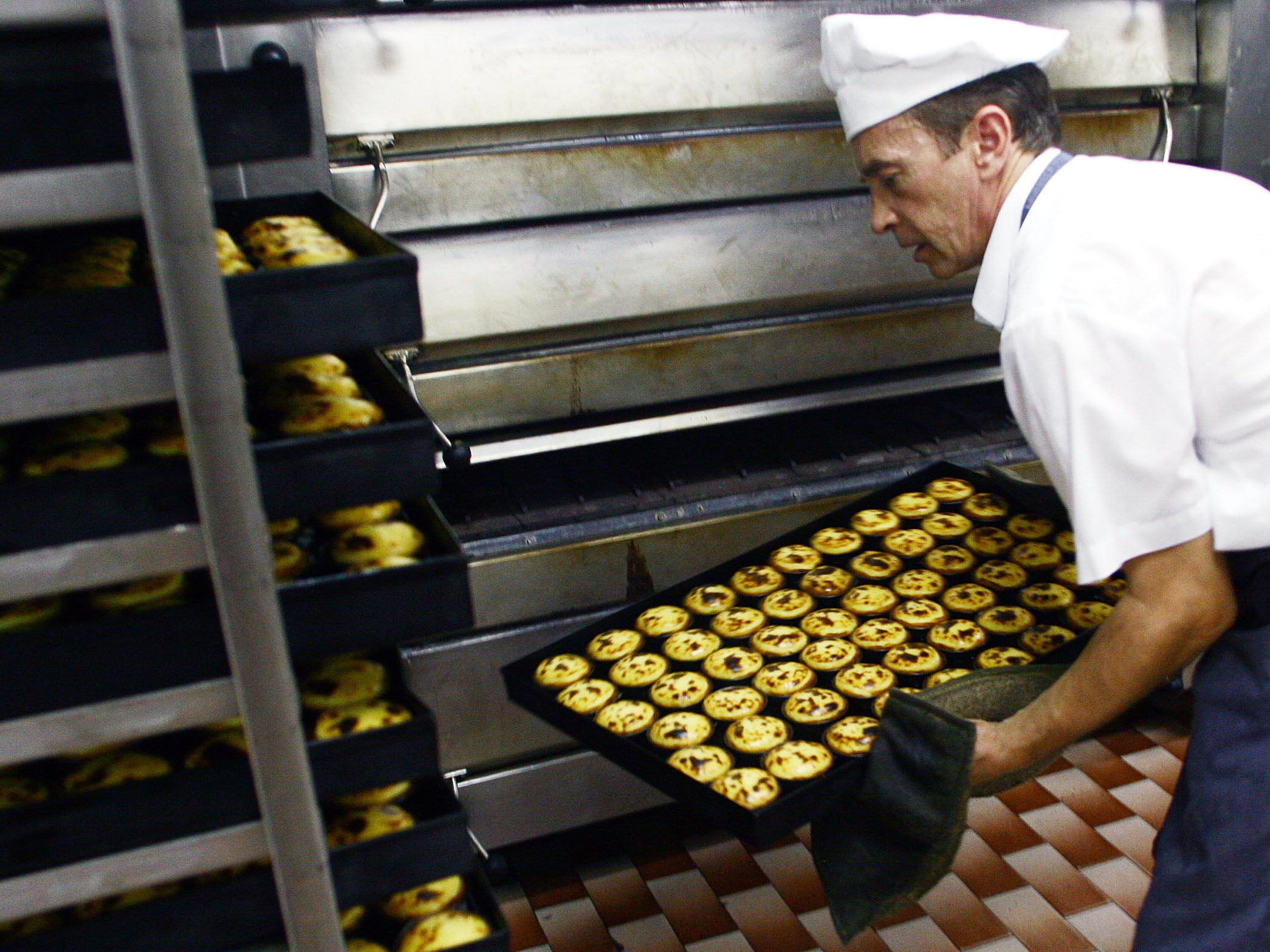
The icing on the cake
Pastelerias are a vital Lisboan institution. In upmarket Baixa-Chiado, the Manteigaria Fabrica de Pasteis de Nata (16) (Rua do Loreto, 2, 00351 213 471 492; no web) is where Lisboetas get their fix of the creamy custard tarts (pastel de nata) the city is famous for. Six for €6 come boxed up (they fly pretty well due to tight packaging). A marble bar allows a stand-up bica (espresso) while you contemplate how many it is acceptable to order.
Travel essentials
Cheapest time to fly
Getting there
The Airobus runs from Lisbon Portela Airport airport (17) to the city centre every 20 minutes. It takes 30 minutes and costs €3.50 each way. Taxis take around 20 minutes to the centre, and cost from €12.
Staying there
The Memmo Principe Real (18) is a modern geometric box of a hotel wrapped in glass, oak and gleaming white plaster. Floor-to-ceiling windows frame classic Lisbon views. Rooms are small but well designed, and guests receive free bottles of orange aperitif to mix themselves. Doubles from €245, B&B.
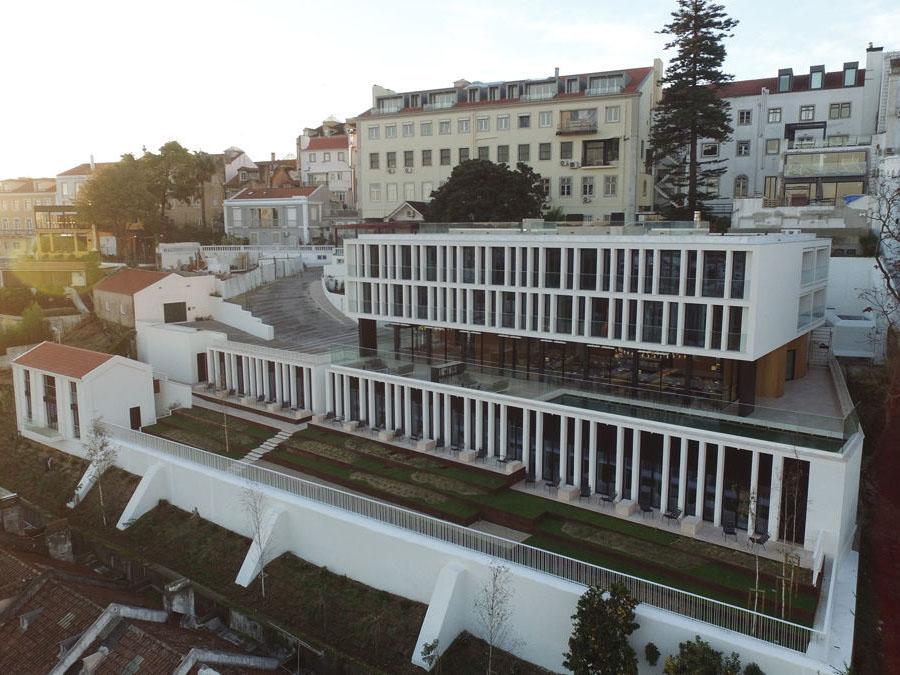
Pride in all things Portuguese is key to the look and feel of the AlmaLusa Baixa/Chiado (19), set in a listed former arsenal one street back from the River Tagus. Local amenities include Castelbel toiletries and the rooms are furnished with pretty tiles and textiles. Deluxe Suites come with kitchenettes and all rooms have use of a free smartphone, perfect for Google maps. Doubles from €145, B&B (00351 212 697 440).
Housed in a 19th-century façade facing the Miradouro de São Pedro de Alcântar, the Independente Hostel & Suites (20) offers affordable grandeur. Once the official residence of the Swiss Ambassador, parquet floors and ornate stucco ceilings mix with 1960s sofas. Choose from the bargain dorms with triple bunk beds or the suites in the adjoining building. Doubles from €15 (Hostel); €75 (Suite), B&B.
Join our commenting forum
Join thought-provoking conversations, follow other Independent readers and see their replies
Comments